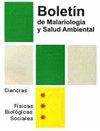{"title":"Distribución espacial y análisis de conglomerados de la enfermedad de Chagas en Perú 2015-2020","authors":"Cesar Augusto Mendivel Geronimo","doi":"10.52808/bmsa.8e7.632.016","DOIUrl":null,"url":null,"abstract":"Chagas disease is a parasitic pathology that affects millions of people in Latin America, currently being found in the territory of Peru as a serious public health problem. As an objective, a study on the spatial distribution and cluster analysis of Chagas disease in Peru 2015-2020 was carried out. The research was retrospective descriptive during the period 2015-2020. As a data collection instrument, the secondary database of the notification sheets of the Ministry of Health of Peru with specifications according to the Epidemiological Bulletin 2015-2020 and the reports of the situational room-CDC were used. The data was stored in Microsoft Excel and maps were made for each year with Bing ©Microsoft Technology, OpenStreetMap to know the spatial distribution and the conglomerates. As a result, a total of 301 cases of Chagas disease were reported throughout the territory, being distributed in 40.53% (122/301) in 2015, 16.28% (49/301) 2016, 11.63% (35/301) 2017, 9.30% (28/301) 2018, 14.95% (45/301) 2019 and 7.31% (22/301) in 2020 respectively, regarding the spatial distribution, Arequipa was the department with the highest number of cases of Chagas disease in the period 2015-2020, followed by Amazonas with and San Martín with 18. Finally, the cluster map of Chagas disease showed a wide geographic distribution, compromising departments such as Cajamarca, Loreto, San Martin, Ucayali and Ayacucho. In conclusion, it is suggested to reinforce and implement prevention and control measures in these areas to reduce the burden of the disease.","PeriodicalId":9070,"journal":{"name":"Boletin De Malariologia Y Salud Ambiental","volume":" ","pages":""},"PeriodicalIF":0.0000,"publicationDate":"2023-04-30","publicationTypes":"Journal Article","fieldsOfStudy":null,"isOpenAccess":false,"openAccessPdf":"","citationCount":"0","resultStr":null,"platform":"Semanticscholar","paperid":null,"PeriodicalName":"Boletin De Malariologia Y Salud Ambiental","FirstCategoryId":"1085","ListUrlMain":"https://doi.org/10.52808/bmsa.8e7.632.016","RegionNum":0,"RegionCategory":null,"ArticlePicture":[],"TitleCN":null,"AbstractTextCN":null,"PMCID":null,"EPubDate":"","PubModel":"","JCR":"Q4","JCRName":"Immunology and Microbiology","Score":null,"Total":0}
引用次数: 0
2015-2020年秘鲁查加斯病的空间分布和聚类分析
查加斯病是一种寄生虫病,影响着拉丁美洲数百万人,目前在秘鲁境内发现,是一个严重的公共卫生问题。作为一个目标,对2015-2020年秘鲁查加斯病的空间分布和聚类分析进行了研究。该研究是2015-2020年期间的回顾性描述性研究。作为一种数据收集工具,使用了秘鲁卫生部通知单的二级数据库,其规格符合《2015-2020年流行病学公报》和美国疾病控制与预防中心情况室的报告。数据存储在Microsoft Excel中,并使用Bing©Microsoft Technology、OpenStreetMap制作每年的地图,以了解空间分布和企业集团。因此,全国共报告301例恰加斯病病例,空间分布分别为2015年40.53%(122/301)、2016年16.28%(49/301)、2017年11.63%(35/301)、2018年9.30%(28/310)、2019年14.95%(45/301)和2020年7.31%(22/301),阿雷基帕是2015-2020年期间查加斯病病例最多的部门,其次是亚马逊和圣马丁,分别为18例和18例。最后,恰加斯病的聚类图显示了广泛的地理分布,包括卡哈马卡、洛雷托、圣马丁、乌卡亚利和阿亚库乔等部门。总之,建议在这些地区加强和实施预防和控制措施,以减轻疾病负担。
本文章由计算机程序翻译,如有差异,请以英文原文为准。


